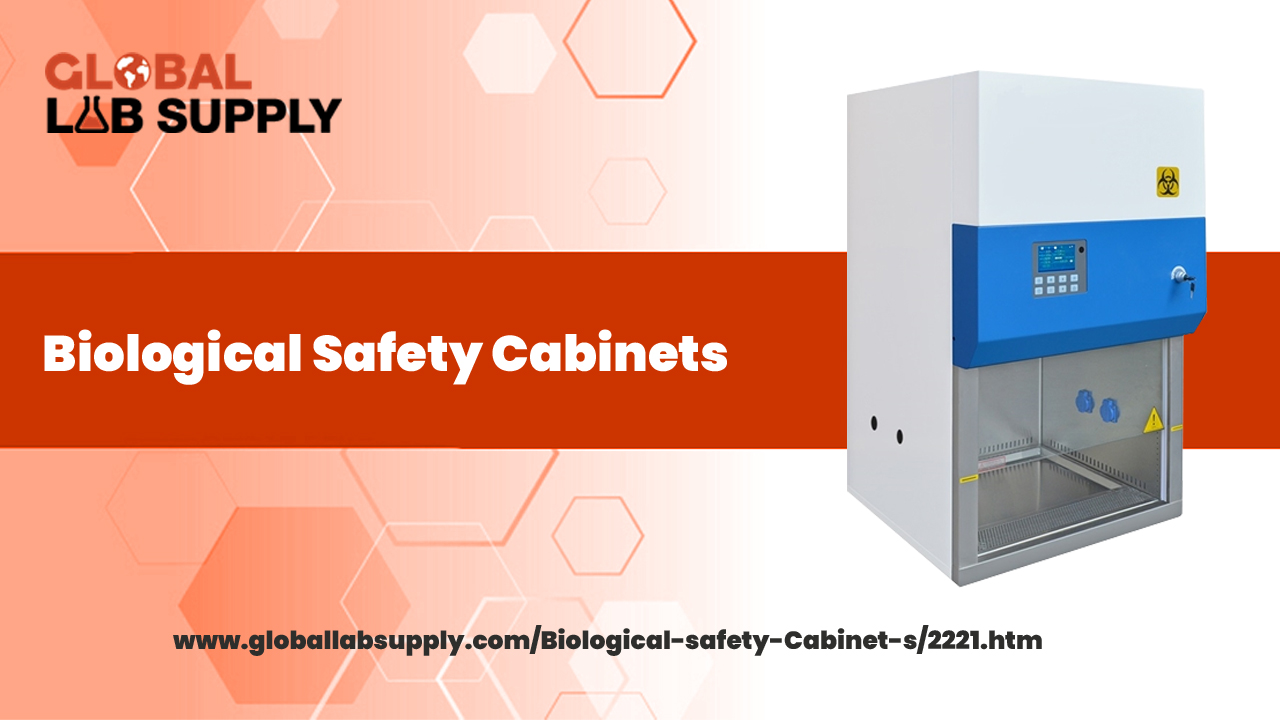
Biological Safety Cabinets: Ensuring Safe Laboratory Operations
Biological safety cabinets (BSCs) are vital equipment in laboratories where research involving potentially hazardous microorganisms or materials takes place. These cabinets play a crucial role in protecting both researchers and the environment from exposure to biological agents. In this comprehensive guide, provided by Global Lab Supply, we will delve into the world of biological safety cabinets, exploring their types, functions, maintenance, and best practices for safe laboratory operations.
Understanding Biological Safety Cabinets
Biological safety cabinets, often referred to as biosafety cabinets or BSCs, are specialized containment devices designed to provide a safe working environment for researchers when handling biological materials. These materials can include bacteria, viruses, fungi, toxins, and other potentially harmful substances.
BSCs function by creating a controlled environment that prevents the escape of hazardous materials into the laboratory and protects researchers from exposure to these materials. They achieve this through a combination of HEPA (High-Efficiency Particulate Air) filtration, airflow patterns, and physical barriers.
Types of Biological Safety Cabinets
There are several types of biological safety cabinets, each designed for specific applications and levels of protection. The most common types include:
Class I Biological Safety Cabinets
Class I BSCs are the simplest type and offer minimal protection to the user and the environment. They provide protection by directing airflow away from the researcher and into a HEPA filter. Class I BSCs are typically used for work with low to moderate-risk agents, such as chemicals and some non-pathogenic organisms.
Class II Biological Safety Cabinets
Class II BSCs are the most commonly used type and are further classified into three categories: Class II Type A1, Class II Type A2, and Class II Type B2. These cabinets offer a higher level of protection compared to Class I and are suitable for working with a wide range of biological materials, including pathogenic agents.
Class II Type A1: These cabinets recirculate 70% of the air through a HEPA filter, while 30% is exhausted. They are suitable for low to moderate-risk materials.
Class II Type A2: Similar to Type A1, but with a greater portion of air (70%) recirculated through a HEPA filter. They are suitable for working with biological agents that require a higher level of protection.
Class II Type B2: These cabinets exhaust 100% of the air, making them ideal for work with hazardous materials, including volatile chemicals and carcinogens.
Class III Biological Safety Cabinets
Class III BSCs are also known as glove boxes or gas-tight cabinets. They provide the highest level of protection and are used for handling extremely hazardous materials, including deadly viruses like Ebola. Researchers work inside these cabinets through attached gloves, and all materials are sealed within the cabinet.
Key Features of Biological Safety Cabinets
To ensure safe and efficient laboratory operations, BSCs come equipped with various features and components:
HEPA Filters
HEPA filters are essential components of BSCs. These filters trap and remove particles as small as 0.3 micrometers, ensuring that the air leaving the cabinet is free of contaminants. Regular maintenance and replacement of HEPA filters are critical to BSC performance.
Airflow Systems
BSCs have specialized airflow systems that create a controlled environment. The airflow typically moves from the top of the cabinet, down toward the work surface, and then into the HEPA filter. This ensures that any contaminants are contained within the cabinet and do not escape into the laboratory.
Front Access Openings
Biological safety cabinets have a front opening with a sash or viewing window. The sash can be raised or lowered to control airflow and provide access to the interior. Researchers should follow guidelines for proper sash height to maintain containment.
UV Germicidal Lamps
Some BSCs are equipped with UV germicidal lamps that can be used to sterilize the work surface. However, UV lamps should never be used when the cabinet is in operation, as they can damage HEPA filters.
Audible and Visual Alarms
BSCs often have alarms to alert users to potential issues, such as low airflow or filter saturation. Regularly checking and responding to these alarms is essential for safety.
Best Practices for Safe Laboratory Operations
To ensure the effective and safe use of biological safety cabinets, laboratory personnel must adhere to best practices:
Proper Training
All personnel working with BSCs should receive comprehensive training on their operation, maintenance, and the specific safety protocols for the materials they will handle.
Regular Maintenance
Routine maintenance is crucial to the performance of BSCs. This includes daily checks, periodic certification, and timely replacement of HEPA filters. Follow the manufacturer’s recommendations for maintenance schedules.
Personal Protective Equipment (PPE)
Always wear appropriate PPE, including lab coats, gloves, and safety goggles when working with BSCs. PPE helps protect you from potential splashes or spills.
Workspace Organization
Keep the work surface of the BSC clean and uncluttered. Only materials required for the experiment should be inside the cabinet to prevent airflow disruptions.
Airflow and Sash Management
Maintain the recommended sash height to ensure proper airflow and containment. Avoid blocking airflow grilles and vents within the cabinet.
Use of Chemicals
If working with chemicals inside the BSC, ensure that they are compatible with the cabinet’s design and consult safety data sheets (SDS) for guidance on safe handling.
No Flames or Open Flames
Never use open flames, such as Bunsen burners, inside a BSC, as they can disrupt airflow and pose a fire hazard.
Monitoring and Documentation
Record all work conducted in the BSC, including materials used and procedures performed. This documentation is essential for traceability and safety audits.
Emergency Procedures
Familiarize yourself with emergency procedures, including what to do in case of a power outage or a BSC malfunction. Ensure that emergency eyewash and shower stations are easily accessible.
Disposal
Dispose of biological materials and waste properly, following established protocols for decontamination and disposal.
Common Mistakes to Avoid
To maintain the integrity of biological safety cabinets and ensure safety, avoid these common mistakes:
Overcrowding the Workspace
Overloading the work surface with materials and equipment can disrupt airflow patterns and compromise containment.
Ignoring Maintenance
Neglecting regular maintenance and filter replacement can lead to decreased BSC performance and potential exposure risks.
Failing to Monitor Airflow
Not regularly checking and monitoring airflow indicators and alarms can lead to unsafe conditions.
Using Open Flames
Using open flames inside a BSC is dangerous and can disrupt airflow, increasing the risk of contamination and fires.
Not Cleaning Up Spills Promptly
Failure to clean up spills promptly can lead to contamination of the workspace and pose health risks.
Conclusion
Biological safety cabinets are indispensable tools for laboratories involved in research with hazardous biological materials. Understanding the different types of BSCs, their key features, and best practices for safe operation is essential for protecting both laboratory personnel and the environment.
Remember that proper training, routine maintenance, and strict adherence to safety protocols are paramount. By following these guidelines and avoiding common mistakes, you can ensure that your laboratory operations are not only efficient but, more importantly, safe for everyone involved. Biological safety cabinets are your first line of defense against potentially harmful agents, and their proper use and maintenance are critical to the success of your research and the well-being of your team.



